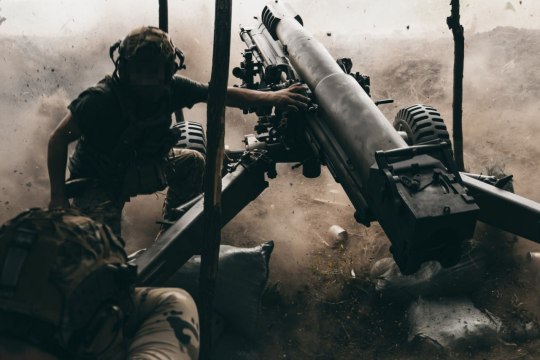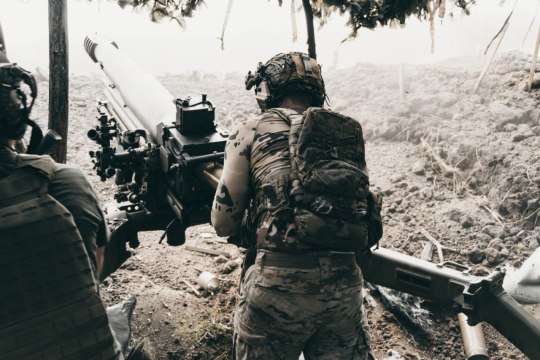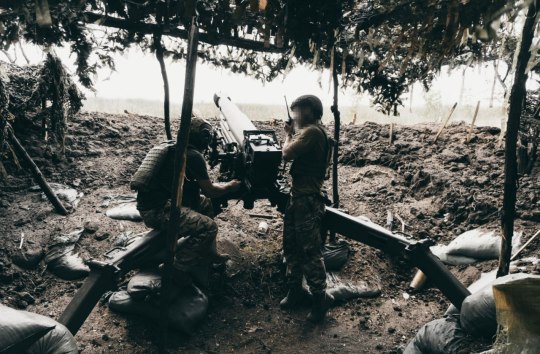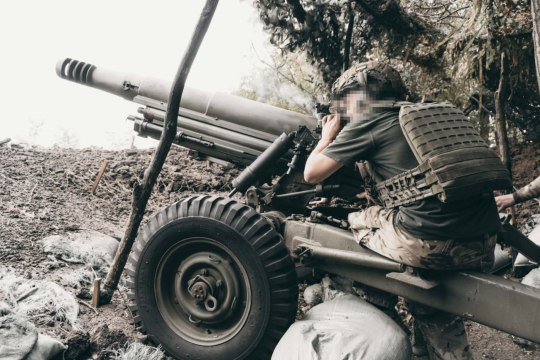#russian invasion 2022
Explore tagged Tumblr posts
Text

February 2022: Kyiv civilians gather in a basement downtown to make Molotov Cocktails at the beginning of russia's full-scale invasion. X
#ukraine#russia#russian invasion#current events#resistance#imperialism#russian imperialism#war in europe#war in ukraine#russian invasion of ukraine#february#2022#2020s
174 notes
·
View notes
Text


this guy was literaly learning on the job we’d correct his lsd induced hallucination about how the 21st century has unfolded in russia and ukraine and he’d come back to us armed with new half remembered fact from wikipedia and try and throw back the thing we literaly told him in our face
#first ukraine was peaceful before russian invasion in 2022 now ukraine been at war since 2014 you never guess who inform him of this#nato sending there best and brightest#sibay babbles at the void
24 notes
·
View notes
Text
Much of the public discussion of Ukraine reveals a tendency to patronize that country and others that escaped Russian rule. As Toomas Ilves, a former president of Estonia, acidly observed, “When I was at university in the mid-1970s, no one referred to Germany as ‘the former Third Reich.’ And yet today, more than 30 years after the fall of the Berlin Wall, we keep on being referred to as ‘former Soviet bloc countries.’” Tropes about Ukrainian corruption abound, not without reason—but one may also legitimately ask why so many members of Congress enter the House or Senate with modest means and leave as multimillionaires, or why the children of U.S. presidents make fortunes off foreign countries, or, for that matter, why building in New York City is so infernally expensive.
The latest, richest example of Western condescension came in a report by German military intelligence that complains that although the Ukrainians are good students in their training courses, they are not following Western doctrine and, worse, are promoting officers on the basis of combat experience rather than theoretical knowledge. Similar, if less cutting, views have leaked out of the Pentagon.
Criticism by the German military of any country’s combat performance may be taken with a grain of salt. After all, the Bundeswehr has not seen serious combat in nearly eight decades. In Afghanistan, Germany was notorious for having considerably fewer than 10 percent of its thousands of in-country troops outside the wire of its forward operating bases at any time. One might further observe that when, long ago, the German army did fight wars, it, too, tended to promote experienced and successful combat leaders, as wartime armies usually do.
American complaints about the pace of Ukraine’s counteroffensive and its failure to achieve rapid breakthroughs are similarly misplaced. The Ukrainians indeed received a diverse array of tanks and armored vehicles, but they have far less mine-clearing equipment than they need. They tried doing it our way—attempting to pierce dense Russian defenses and break out into open territory—and paid a price. After 10 days they decided to take a different approach, more careful and incremental, and better suited to their own capabilities (particularly their precision long-range weapons) and the challenge they faced. That is, by historical standards, fast adaptation. By contrast, the United States Army took a good four years to develop an operational approach to counterinsurgency in Iraq that yielded success in defeating the remnants of the Baathist regime and al-Qaeda-oriented terrorists.
A besetting sin of big militaries, particularly America’s, is to think that their way is either the best way or the only way. As a result of this assumption, the United States builds inferior, mirror-image militaries in smaller allies facing insurgency or external threat. These forces tend to fail because they are unsuited to their environment or simply lack the resources that the U.S. military possesses in plenty. The Vietnamese and, later, the Afghan armies are good examples of this tendency—and Washington’s postwar bad-mouthing of its slaughtered clients, rather than critical self-examination of what it set them up for, is reprehensible.
The Ukrainians are now fighting a slow, patient war in which they are dismantling Russian artillery, ammunition depots, and command posts without weapons such as American ATACMS and German Taurus missiles that would make this sensible approach faster and more effective. They know far more about fighting Russians than anyone in any Western military knows, and they are experiencing a combat environment that no Western military has encountered since World War II. Modesty, never an American strong suit, is in order.
— Western Diplomats Need to Stop Whining About Ukraine
#eliot a. cohen#current events#politics#ukrainian politics#american politics#warfare#strategy#tactics#diplomacy#russo-ukrainian war#2022 russian invasion of ukraine#war in afghanistan#vietnam war#ukraine#usa#toomas hendrik ilves
520 notes
·
View notes
Text

Borodianka, a town near Kyiv, was devastated after Russian airstrikes targeted apartment buildings in April 2022 near the beginning of the invasion of Ukraine.
Photographer: Dmytro Soloviov
13 notes
·
View notes
Text
Fire Support Group "Omega Wings "
Intense fire support is a crucial component for the successful conduct of operations and the effectiveness of military tasks




#ukraine#war in ukraine#war 2022 2024#pray for ukraine#pray for ukrainians#pray for ukrainian soldiers#ukrainian soldiers#military#fire support#omega#крила омеги#слава героям україни#ukraine under attack#war#ukrainians#stand with ukraine#support ukraine#fire support group#нацгвардія#national guard#нгу#fight for freedom#spirit of freedom#freedom for ukraine#russia is a terrorist state#russian invasion of ukraine#battlefield#battleground#russia must burn#war photography
50 notes
·
View notes
Text
The Wagner Group mercenaries marched 800 kilometers across Russia, shot down planes and helicopters, took over a regional military command, provoked a panic in Moscow—troops dug trenches, the mayor told everyone to stay home—and then stood down. Yet in a way, the strangest aspect of Saturday’s aborted coup was the reaction of the people of Rostov-on-Don, including the city’s military leaders, to the soldiers who arrived and declared themselves to be their new rulers.
The Wagner mercenaries showed up in the city early Saturday morning. They met no resistance. Nobody shot at them. One photograph, published by The New York Times, shows them walking at a leisurely pace across a street, one of their tanks in the background, holding yellow coffee cups.
Yevgeny Prigozhin, Wagner’s violent ex-con leader, posted videos of himself chatting with the local commanders in the courtyard of the headquarters of Russia’s Southern Military District. Nobody seemed to mind his being there.
Outside, street sweepers continued their work. Early in the morning, a few people came to gawk, but not many. After Russian President Vladimir Putin gave a panicked speech on television, comparing the situation to 1917 and evoking the ghost of civil war, one man pushing a bicycle was filmed berating the Wagnerites and telling them to go home. The troops laughed him off. But later in the day, more people showed up, and the atmosphere grew warmer.
People shook their hands, brought them food, took selfies. “People are bringing pirozhki, apples, chips. Everything there in the store has been bought to give to the soldiers,” one woman said on camera. In the evening, after Prigozhin had decided to stand down and go home (wherever home turns out to be), he drove away in an SUV with crowds filming him on their cellphones and cheering him on, as if he were a celebrity leaving a movie premiere or a gallery opening. Some chanted “Wagner! Wagner!” as the troops emerged into the street. This was the most remarkable aspect of the whole day: Nobody seemed to mind, particularly, that a brutal new warlord had arrived to replace the existing regime—not the security services, not the army, and not the general public. On the contrary, many seemed sorry to see him go.
The response is hard to understand without reckoning with the power of apathy, a much undervalued political tool. Democratic politicians spend a lot of time thinking about how to engage people and persuade them to vote. But a certain kind of autocrat, of whom Putin is the outstanding example, seeks to convince people of the opposite: not to participate, not to care, and not to follow politics at all. The propaganda used in Putin’s Russia has been designed in part for this purpose. The constant provision of absurd, conflicting explanations and ridiculous lies—the famous “firehose of falsehoods”— encourages many people to believe that there is no truth at all. The result is widespread cynicism. If you don’t know what’s true, after all, then there isn’t anything you can do about it. Protest is pointless. Engagement is useless.
But the side effect of apathy was on display yesterday as well. For if no one cares about anything, that means they don’t care about their supreme leader, his ideology, or his war. Russians haven’t flocked to sign up to fight in Ukraine. They haven’t rallied around the troops in Ukraine or held emotive ceremonies marking either their successes or their deaths. Of course they haven’t organized to oppose the war, but they haven’t organized to support it either.
Because they are afraid, or because they don’t know of any alternative, or because they think it’s what they are supposed to say, they tell pollsters that they support Putin. And yet, nobody tried to stop the Wagner group in Rostov-on-Don, and hardly anybody blocked the Wagner convoy on its way to Moscow. The security services melted away, made no move and no comment. The military dug some trenches around Moscow and sent some helicopters; somebody appears to have sent bulldozers to dig up the highways, but that was all we could see. Who will respond if a more serious challenge to Putin ever emerges? Certainly the military will think twice: Perhaps a dozen Russian servicemen, mostly pilots, died at the hands of the Wagner mutineers, more than died during the failed coup of 1991. Nobody seems particularly bothered about them.
One day after this aborted coup, it is too early to speculate about Prigozhin’s true motives, about what he was really given in exchange for standing down, about where Putin really spent the day on Saturday—some say St. Petersburg, some say a dacha in Novgorod—or about anything else, really. But the flimsiness of this regime’s ideology and the softness of its support have been suddenly laid bare. Expect more repression as Putin tries to stay in charge, more chaos, or both.
#current events#politics#russian politics#psychology#sociology#russo-ukrainian war#2022 russian invasion of ukraine#russia#yevgeny prigozhin#vladimir putin#wagner group
163 notes
·
View notes
Text
Some days I wish I was like Lum from UY because she can express her fury or displeasure via electricity and by God I've got a few people irl I'd love to express myself too lowkey
#oli talks#ooc#muns ramblings#mindless ramblings of a madman#urusei yatsura#uy#urusei yatsura manga#urusei yatsura anime#urusei yatsura 2022#uy anime#uy manga#lum invader#lum the invader#russian invasion#sometimes you just gotta#grab someone and yell IDIOT while shocking them/biting/clawing them ya know?
16 notes
·
View notes
Text
i’m actually just so paranoid about russia, it’s no good. distracting myself distracting myself, but also it’s quietly driving me mad
#i had this problem when russia invaded ukraine in 2022#i quit instagram because of nightmares#now the prisoners are being exchanged#and interviews with the tortured people are emerging#it’s gruesome#personal drivel#russian invasion
9 notes
·
View notes
Text


One of the defining aspects of the current war in Ukraine is the presence of fighting units with distinct animating ideologies. Plenty of attention has been given to the far-right units of both the Territorial Defense Forces (TDF) and the Armed Forces of Ukraine, such as the Azov Regiment and Right Sector. On the Russian side, there has been a mix of ideologies present among its fighters, from neo-Bolshevik/authoritarian communist to neo-Nazi. Nationalist factions exist on each side as well, such as the Kastuś Kalinoŭski Regiment comprised of Belarusian volunteers, and the Georgian National Legion from their namesake country, organized in 2014 and still fighting today, both on the side of Ukraine. The 141st Special Motorized Regiment, or the Kadyrovtsy, a Chechen paramilitary unit, has posted droves of content on social media from their side of the invasion forces, notably during the siege of Mariupol—which since the outset of the war became an adversarial contest between the Kadyrovtsy and the neo-Nazi Azov Regiment. (Azov fighters posted video of themselves dipping rifle rounds in pork lard as an insult to their Muslim enemies on February 27th.)
Exclusive to the Ukrainian side of the war are fighting anarchist formations and those of ideologically aligned units. One of the most prominent anarchist organizations involved in the war is the Resistance Committee (RC), a coordinating body for anarchist, libertarian, and anti-fascist units within the TDF. Many of these smaller units participating in the Resistance Committee are openly anarchist, such as RevDia and Black Flag Ukraine. Others are less ideologically inclined and were organized under different auspices prior to the war, such as the anti-fascist football hooligan firm, Hoods Hoods Klan.
The Resistance Committee and affiliated fighting units have had a consistent presence on social media since the war began, posting videos and photos of their armed fighters in the field on exercise, on the range siting in Maxim machine guns, at aid collection points, declaring their solidarity for jailed comrades in Belarus, patrolling their various areas of operations, and recently of some affiliated fighters at the front, who along with other members of the TDF have been redeployed to defend the east of the country. On May 20th, they published a four-page manifesto outlining who they are, their principles, the current scope of their activities, their organizational aspirations and greater aspirations for Ukrainian society, their view on the war, and some key demands made of both the Ukrainian government and the international community.
The very presence of anarchists within the TDF has raised many questions among those outside of Ukraine. Typical of these questions is to ask how anarchists fighting for Ukraine are organized, and what their approximate force strength is at this time. Even more common are questions of how anarchists could join any state’s military without contradicting their own ideology; similar to this are questions of how “anarchists could fight on the same side as fascists and neo-Nazis”. Ignoring that this last question is a major mischaracterization of the TDF’s force structure, we nonetheless hope to answer all of these questions about the anarchists currently fighting in and defending Ukraine.
Despite the attention that anarchists of the TDF have attracted in recent weeks, there is still much that the outside world does not know about them. Our interview with a participating member of the Resistance Committee and a TDF fighter of the affiliated anti-authoritarian platoon, “Ilya,” should answer many of these questions. Speaking strictly on his own behalf, however, here is what Ilya had to say:
#2022 Russian invasion of Ukraine#community self-defense#interview#popular opposition to dictatorship#resistance#anarchism#anarchy#anarchist society#geopolitics#autonomy#revolution#communism#anti capitalist#anti capitalism#late stage capitalism#daily posts#libraries#leftism#social issues#economics#economy#anarchy works#anarchist library#survival#freedom#Militant Wire
4 notes
·
View notes
Text
Update from Ukraine | The first Hours of War | How did it all Begin?
youtube
#22.02.2022#russo ukrainian war#2/24#february 24#2022#ukraine#🇺🇦#🇷🇺#denys davydov#the pilot blog#update from ukraine#youtube#day by day#updates#anniversary#3 year anniversary#russian invasion of ukraine#invasion#russian invasion
4 notes
·
View notes
Text

1st March 2022: Ukrainian and European Union flags outside the Stadtweinhaus in Münster, Germany days after russia's full-scale invasion of Ukraine.
#russian invasion of ukraine#current events#germany#ukraine#russia#north rhine westphalia#stand with ukraine#war in europe#genocide#war in ukraine#march#2022#2020s#russian war crimes
169 notes
·
View notes
Text
The United States government is doubling down on its commitment to safeguarding Ukrainian culture amid the Eastern European country’s ongoing war with Russia.
On September 19, U.S. officials announced a new $1 million grant to the International Center for the Study of the Preservation and Restoration of Cultural Property (ICCROM), which will use the funds to “support the next phase of a multiyear project to help Ukraine improve risk reduction and emergency management of its cultural heritage,” according to a statement. The grant is part of the U.S.’s $10.5 million commitment to Ukraine under the Ukraine Cultural Heritage Response Initiative, which was established in 2023 by the U.S. Department of State.
“Ukraine is fighting the Russian invasion on all fronts,” says Maksym Kovalenko, the Ukrainian consul general in Naples, Italy, in the statement. “The cultural front is no exception. The support of the international community provides us with an ability to respond to the challenges of war and, despite everything, to develop a long-term strategy for the preservation and restoration of our cultural heritage.”
Since Russia invaded Ukraine in February 2022, UNESCO has verified damage to 438 Ukrainian cultural sites, including religious sites, buildings of historical or artistic interest, museums, monuments, libraries, and an archive. The agency previously said it was “gravely concerned” over threats to Ukrainian heritage.
Russian troops have removed “entire truckloads of artworks and historical artifacts” from Ukrainian museums, supposedly for “safekeeping,” reports Vitaly Shevchenko for BBC News. In some museums in Russian-occupied Ukraine, Russian troops have removed exhibitions and replaced them with propaganda glorifying the war.
In a 2023 essay for Smithsonian magazine, Smithsonian Distinguished Scholar and Ambassador-at-Large Richard Kurin wrote, “These attacks are not just random, nor do they represent collateral damage. Rather, they suggest a targeted attack on Ukrainian history, culture and identity, a means toward [Russian President Vladimir] Putin’s ends—the destruction is a deliberate attempt to obliterate Ukrainian history and culture.”
Hundreds of professionals associated with Ukrainian and international organizations—among them the Smithsonian Cultural Rescue Initiative—have been fighting the threat to Ukrainian heritage for the past two years. In some cases, cultural heritage workers have been able to smuggle important works of art out of Ukraine and display them elsewhere. Last year, for example, five precious artworks rescued from Kyiv’s Khanenko Museum went on view at the Louvre in Paris.
The $1 million grant—the second-largest awarded under the Ukraine Cultural Heritage Response Initiative to date—arrives on the heels of newly imposed emergency import restrictions aimed at fighting the illegal removal and sale of Ukrainian cultural artifacts. Those restrictions, which limit the types of Ukrainian cultural property that can enter the U.S., will be in place until 2029.
In addition to offering funds for cultural rescue initiatives, the U.S. announced more than $8 billion in military assistance to Ukraine on September 26, the day that Ukrainian President Volodymyr Zelenskyy visited the White House. In total, Congress has appropriated $175 billion in aid to Ukraine, per the Council on Foreign Relations.
“Ukrainians are fighting for the human rights and freedoms we all cherish,” says Lee Satterfield, the U.S.’s acting under secretary for public diplomacy and public affairs, in the statement. “And they are also fighting, in a very real sense, for their identity as a distinct and unique culture, which Vladimir Putin has denied—a denial he has used to falsely justify his brutal, full-scale invasion. [The $1 million] funding will support the heroic efforts of Ukrainians to protect and preserve their cultural heritage.”
#current events#politics#ukrainian politics#russian politics#art#art history#museums#russo-ukrainian war#2022 russian invasion of ukraine#ukraine#russia#usa#smithsonian institution#khanenko museum#louvre#vitaly shevchenko#richard kurin#volodomyr zelenskyy#lee satterfield#vladimir putin#iccrom#unesco
8 notes
·
View notes
Text
And this was his answer: Help us fight them here, help us defeat them here, and you won’t have to fight them anywhere else. Help us preserve some kind of open, normal society, using our soldiers and not your soldiers. That will help you preserve your open, normal society, and that of others too. Help Ukraine fight Russia now so that no one else has to fight Russia later, and so that harder and more painful choices don’t have to be made down the line.
— Zelensky Has an Answer for DeSantis
#anne applebaum#volodomyr zelenskyy#current events#warfare#politics#russian politics#ukrainian politics#international relations#russo-ukrainian war#2022 russian invasion of ukraine#russia#ukraine#ron desantis
84 notes
·
View notes
Text

tchaikovsky didn't even live in the russian federation lmao the russian empire was a whole different state. can't believe tchaikovsky came back from the dead to support an invasion that happened over a century after his death done by a state that didn't even exist when he was alive. shame on him
#if you were boycotting tchaikovsky for the imperialism of the russian empire that would make more sense tho im not sure what the point of#culturally boycotting a dead empire that's already fallen is#doesnt have anything to do with the 2022 invasion of ukraine though lol
7 notes
·
View notes
Text
The Wagner head, Yevgeny Prigozhin, has accused Moscow’s leadership of lying to the public about the justifications for invading Ukraine, in the latest sign of conflict between Vladimir Putin’s government and one of his most important allies.
In an explosive 30-minute video posted on his Telegram channel, Prigozhin dismissed Moscow’s claims that Kyiv was planning to launch an offensive on the Russian-controlled territories in eastern Ukraine in February 2022.
“There was nothing extraordinary happening on the eve of February 24,” Prigozhin said.
“The ministry of defence is trying to deceive the public and the president and spin the story that there was insane levels of aggression from the Ukrainian side and that they were going to attack us together with the whole Nato block,” the Wagner head said.
Shortly after Russia attacked Ukraine, Putin claimed Moscow’s invasion had thwarted Ukraine’s own plans for “a massive attack on the Donbas, and then on the Crimea”.
Prigozhin also said Russia’s leadership could have avoided the war by negotiating with Ukraine’s president, Volodomyr Zelenskiy.
“When Zelenskiy became president, he was ready for agreements. All that needed to be done was to get off Mount Olympus and negotiate with him,” he said.
Prigozhin has been arguing with top military officials for months, blaming the minister of defence, Sergei Shoigu, for battlefield failures.
However, his latest tirade appeared to be a new escalation, as the warlord directly contradicted Putin’s rationale for the invasion, implying it was based on lies in what amounts to the harshest criticism by any prominent Russian war figure of the decision to attack Ukraine.
“What was the war for? The war needed for Shoigu to receive a hero star … The oligarchic clan that rules Russia needed the war,” he said.
“The mentally ill scumbags decided: ‘It’s OK, we’ll throw in a few thousand more Russian men as cannon fodder. They’ll die under artillery fire, but we’ll get what we want,’” Prigozhin continued.
While the warlord was careful not to directly attack the Russian president, Prigozhin did question several decisions made by Putin, including the Kremlin’s decision to exchange more than 100 captured Azov fighters for Viktor Medvedchuk, a close ally of Putin.
And in one instance, Prigozhin appeared to criticise the Russian president for continuing to self-isolate.
“We still have self-isolation in our country, and therefore none of the decision-makers have yet met [with military generals and discussed how to win the war]. They all talked on the phone.”
Prigozhin, whose Wagner troops have pulled back from Bakhmut, also attacked Russia’s current war efforts in the face of Ukraine’s counteroffensive.
Directly contradicting Putin’s claims that Moscow has fended off Kyiv’s counterattack, Prigozhin also accused the Russian military leadership of lying to the public about the scale of its losses and setbacks in Ukraine.
“The Russian army is retreating in all directions and shedding a lot of blood … What they tell us is the deepest deception.”
#current events#politics#russian politics#russo-ukrainian war#2022 russian invasion of ukraine#russia#yevgeny prigozhin#wagner group
88 notes
·
View notes
Text

Ha!
Clipped this from global news February 25, 2022 — I had a feeling this was going to be historic...




"not going to impose anything by force"
Expected to be over in 3 days. Now it's 3 years.
#russian war on ukraine#vladimir putin#3 years#invasion of ukraine#special military operation#3 days war#surrender#india today news#russian military#russian army#news article#february 25#2022
0 notes